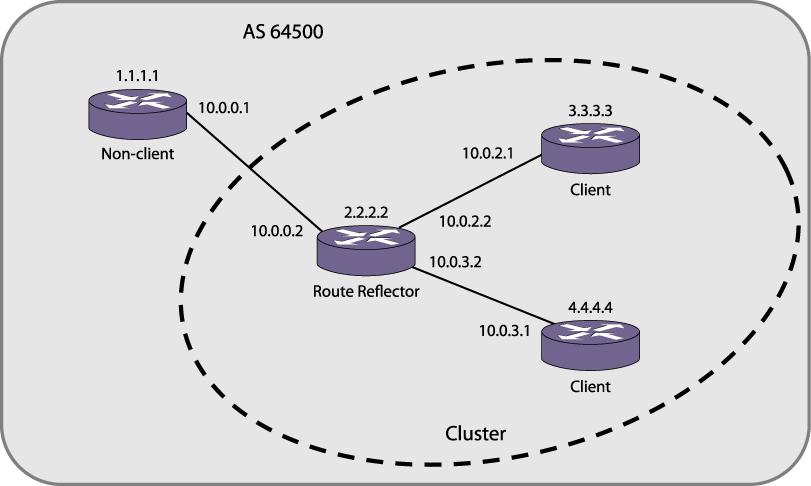One way to overcome the difficulties of creating a fully meshed AS is to use route reflectors. Route reflectors allow a single router to serve as a central routing point for the AS. All BGP (Border Gateway Protocol) speakers in the AS will peer with the route reflector to learn routes.
A cluster is formed by the route reflector and its client routers. Peer routers that are not part of the cluster must be fully meshed according to the rules of BGP.
A BGP cluster, including the route reflector and its clients, is shown in Route Reflectors.

This topology minimizes the number of BGP peering sessions required in an AS by using a route reflector.
In this example, although the BGP speakers 3.3.3.3 and 4.4.4.4 do not have a direct BGP peering session between them, these speakers still receive routes from each other indirectly through 2.2.2.2. The router 2.2.2.2 is called a route reflector and is responsible for reflecting routes between its clients. Routes received from the client 3.3.3.3 by the router 2.2.2.2 are reflected to 4.4.4.4 and vice-versa. Routes received from 1.1.1.1 are reflected to all clients.

 Print
this page
Print
this page Email this topic
Email this topic Feedback
Feedback